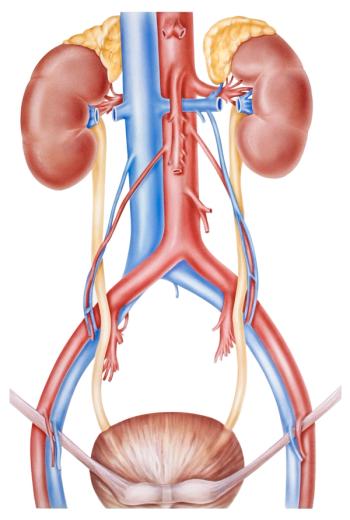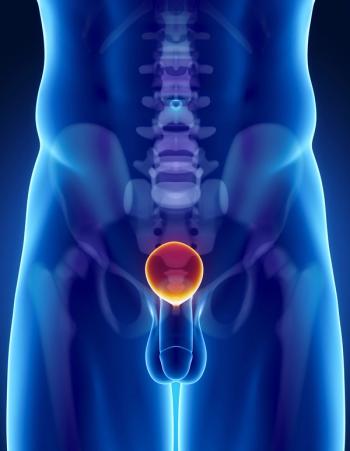
Updated Trial for PSMA-Targeted Therapy in Metastatic Prostate Cancer Excites
The latest trial results are based on a larger patient population and were reported at the 2019 ASCO Genitourinary Cancers Symposium.
The investigational radiolabeled small molecule that targets prostate-specific membrane antigen (PSMA), lutetium-177 PSMA-617 (LuPSMA), conferred a high response rate among a small group of men with metastatic castration-resistant prostate cancer in a single-arm, single-center, phase II trial. Results from an initial group of 30 patients who received LuPSMA were reported previously. The updated trial results are based on a larger patient population and were
“[The trial] is exciting for a number of reasons,”
The trial enrolled 50 eligible men with metastatic castration-resistant prostate cancer that progressed after standard treatments. All patients had high PSMA expression and received up to 4 cycles of LuPSMA every 6 weeks. The primary endpoints were prostate-specific antigen (PSA) response (per Prostate Cancer Clinical Trials Working Group Criteria) and toxicity (per Common Terminology Criteria for Adverse Events v4.3).
Patients had a median age of 71 years (range, 50 to 87 years), Gleason score of 8 (range, 6 to 10), PSA level of 189.8 µg/mL (range, 7.4 to 4022.4), and PSA doubling time of 2.6 months (range, –9.1 to 387.0). Common prior treatments were abiraterone or enzalutamide or both (90%), docetaxel (84%), and cabazitaxel (48%). Patients received a median number of 4 cycles of LuPSMA (range, 1 to 4) with a median administered radioactivity of 7.8 GBq per cycle (range, 4.0 to 8.9).
At a median follow-up of 23.5 months, 32 of 50 patients (64%; 95% CI, 50–77) achieved a PSA decline of at least 50%; of those patients, 22 (44%; 95% CI, 30–59) achieved a PSA decline of at least 80%. A total of 14 patients received additional cycles of LuPSMA after disease progression, and 9 of those patients (64%) achieved a PSA decline of at least 50%.
Patients had a median PSA progression-free survival (PFS) of 6.9 months (95% CI, 5.7–8.8), and those who achieved a PSA decline of more than 50% had a longer median PSA PFS than those who did not (8.3 vs 4.2 months; P < .001). Patients had a median overall survival (OS) of 13.3 months (95% CI, 10.5–18.0), and similarly, those who achieved a PSA decline of more than 50% had a longer median OS than those who did not (18.0 vs 8.7 months; P < .001).
The most common treatment-emergent grade 1 or 2 adverse events were dry mouth (66%), nausea (48%), and fatigue (36%). Treatment-emergent grade 3 or 4 thrombocytopenia (10%) and anemia (10%) were considered “infrequent.”
“Nothing really stands out that’s high grade or long term,” Tagawa said about the adverse events. “I think the drug is very safe.” He noted that a
In light of the positive trial results, two randomized, prospective trials are now underway: the phase III VISION trial, which is sponsored by Endocyte and will evaluate LuPSMA vs standard of care (ClinicalTrials.gov Identifier: NCT03511664); and the phase II TheraP trial, which is sponsored by the Australian and New Zealand Urogenital and Prostate Cancer Trials Group and will evaluate LuPSMA vs cabazitaxel (ClinicalTrials.gov Identifier: NCT03392428).
“Overall this is a good study, and I’m glad that now multiple different places are doing prospective studies,” Tagawa said.
Newsletter
Stay up to date on recent advances in the multidisciplinary approach to cancer.




















































































